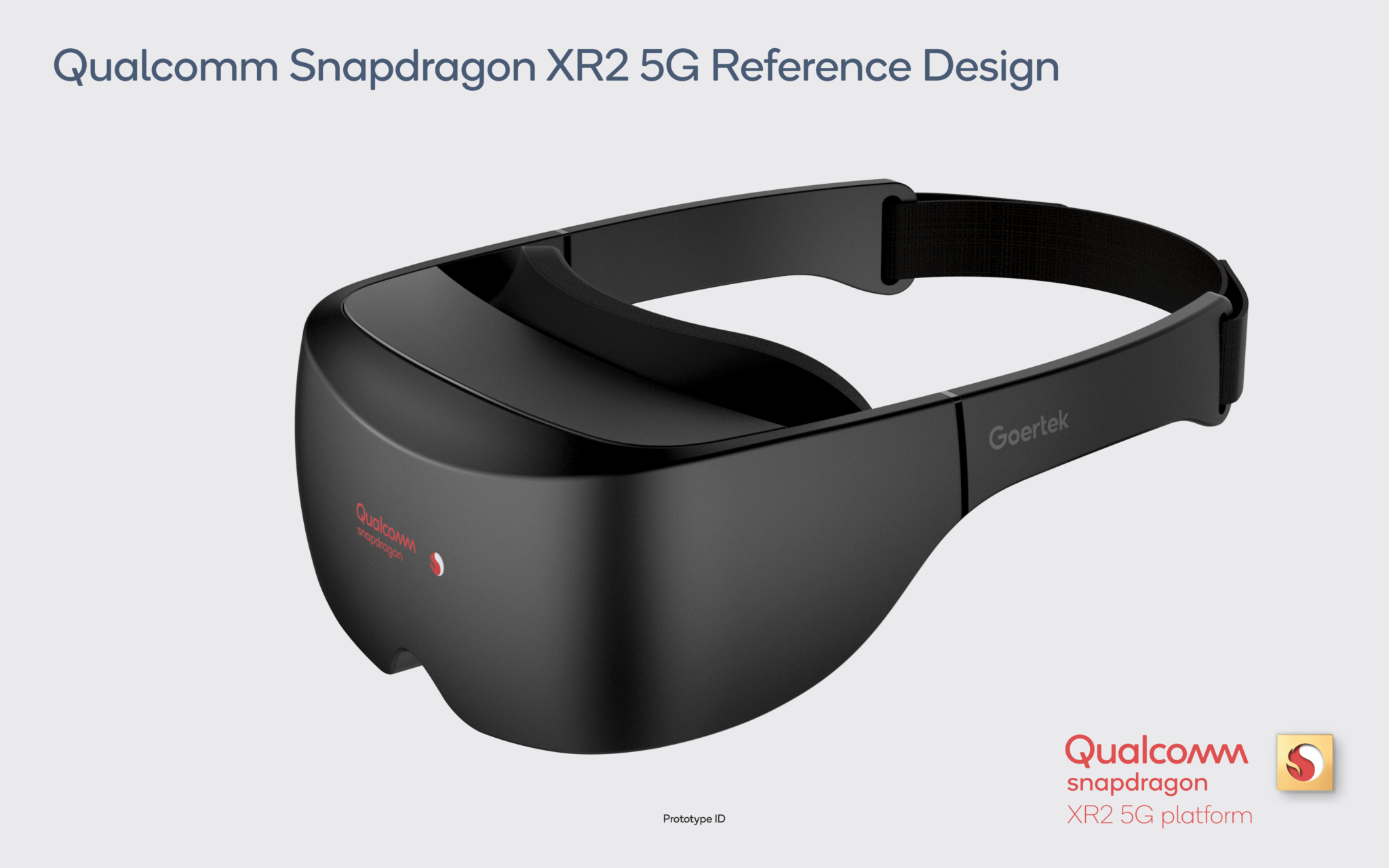
In Augmented Reality, Virtual Reality and Mixed Reality News
February 25, 2020 – Duing its “What’s Next in 5G” press event today, Qualcomm Technologies, Inc. has unveiled a new extended reality (XR) reference design headset based on the Qualcomm Snapdragon XR2 Platform, making it the world’s first 5G-enabled XR reference design that offers superior performance, immersion and interactivity, according to the company.
Culminating four generations of XR reference design expertise, Qualcomm states that its new design simplifies complex technologies and will help to enable its customers to bring the next generation of premium-quality augmented reality (AR), virtual reality (VR) and mixed reality (MR) devices to consumers and the enterprise in 2020.
Powered by the Snapdragon XR2 Platform, Qualcomm states that the reference design has 2x the CPU and GPU performance, 4x more video bandwidth, 6x higher resolution and 11x AI improvement compared to the company’s current 835 Mobile XR platform. The reference design supports up to seven cameras:
- Two internal cameras, one for each eye to support eye tracking;
- Four external cameras – two RGB cameras for MR experiences and two for head tracking, which can also be used to generate accurate depth maps;
- The reference design allows partners to assemble different configurations with an additional camera for facial and lip tracking or a second monochrome camera for controller tracking.
The Snapdragon XR2 reference design also delivers a comprehensive, end-to-end boundless XR over 5G solution with the Qualcomm Snapdragon X55 5G Modem-RF System to allow OEMs to rapidly develop 5G XR devices for global networks. With native support for 5G mmWave and sub-6 GHz, the reference design has been tested and validated over Ericsson’s 5G infrastructure. With the distributed compute framework that unlocks boundless XR, on-device processing can now be augmented with compute at the Multi-Access Edge Computing (MEC) via a 5G connection, or on a nearby PC using a 60-GHz wireless connection, which Qualcomm states will help to achieve new levels of immersion and “never-seen-before experiences”.
In addition to components, the reference design includes an IR emitter for hand tracking and head tracking with simultaneous localization and mapping (SLAM) to coexist. Other feature enablements include 3D audio and voice commands and 2Kx2K per eye dual panel LCD support. The reference design has embedded technology partners including the Atraxa electromagnetic tracking technology from Northern Digital Inc. (NDI) that enables accurate, low latency 6DoF controller and peripheral device tracking without line-of-sight restrictions. Compatibility with embedded eye tracking from Tobii includes Tobii Spotlight Technology for foveated rendering which helps optimize system resources.
Qualcomm added that Goertek developed the VR form factor of the reference design to enable global manufacturers to quickly scale and build AR, VR and MR devices for commercial use. The company anticipates that its Snapdragon XR2 reference design will help OEMs bring futuristic experiences to consumers and the enterprise and is expected to be available for select partners in the coming months.
Image credit: Qualcomm Technologies, Inc.
About the author
Sam is the Founder and Managing Editor of Auganix. With a background in research and report writing, he has been covering XR industry news for the past seven years.
